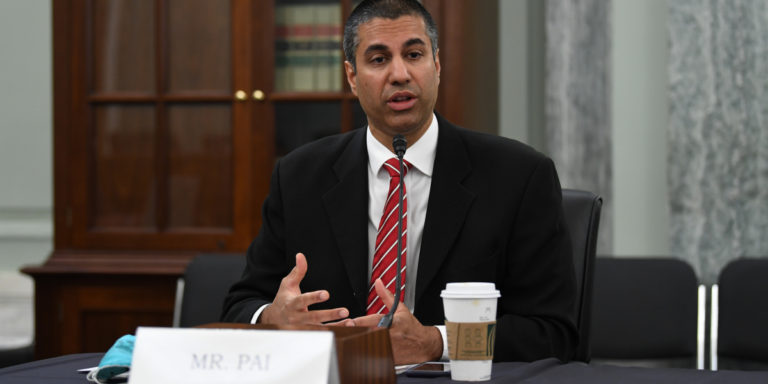
[ad_1]
Our mission to help you navigate the new normal is fueled by subscribers. To enjoy unlimited access to our journalism, subscribe today.
Regulators are increasingly squeezing social media companies over a law that protects them from liability from the hate, hoaxes, and violence that their users post.
On Thursday, Federal Communications Commission Chairman Ajit Pai said he plans to review Section 230, as the law is known, to “clarify” the law to determine whether it should be reined in or eliminated.
For Facebook and Twitter, the law is critical to how they operate. Without the legal protection, the companies would have to further restrict and police content on their services—at a huge cost considering the millions of posts in question annually.
“Social media companies have First Amendment right to free speech,” Pai said in a statement. “But they do not have a First Amendment right to special immunity denied to other media outlets.”
Here’s what you need to know about the fight over Section 230.
What Section 230’s opponents say
Lawmakers from both political parties have pushed for increased regulation of social media companies. Republicans accuse Twitter and Facebook of unfairly censoring conservative views while Democrats complain that they fail to control misinformation and hate speech.
In September, the Justice Department unveiled proposed changes to Section 230. First, it recommended new language that would hold online services accountable for “unlawfully” censoring speech. Second, the agency wants to crack down on services for “knowingly” facilitating online criminal activity, by making them subject to civil suits, especially related to child sexual abuse and terrorism.
Earlier this year, lawmakers introduced several bills that could affect Section 230. One, proposed in March, would remove some of the legal protections for companies while another, in June, is somewhat less aggressive.
The federal government put Section 230 in its sights after President Trump signed an executive order in May requesting that the FCC and the Federal Trade Commission eliminate legal protections for social media companies. His move came after Twitter had added new warning labels to some of his tweets because he had included false information.
U.S. Supreme Court Justice Clarence Thomas added fuel to the fire by suggesting that online services have benefited from “sweeping protections” that go beyond the actual text of the law. Thomas said the court should consider narrowing what the law covers if there’s a relevant case the justices can review.
What Section 230’s supporters say
Tech industry supporters say Section 230 is critical for people to express themselves freely online. Instead of reducing misinformation, they say the repealing the law will silence users and cause companies to go overboard in policing speech on their services.
U.S. Sen. Ron Wyden, a Democrat from Oregon who co-authored Section 230 pointed to yet another consequence of changing the law: Companies would be reluctant to remove and label misinformation, which he suggested plays into Trump’s hand.
“Without Section 230, sites would have strong incentives to go one of two ways,” he said in a CNN op-ed in June. “Either sharply limit what users can post, so as to avoid being sued, or to stop moderating entirely. … I think we would be vastly worse off in either scenario.”
What’s fueling the fight?
Lawmakers had hoped to take swift action on Section 230 because of the upcoming election and the various related problems on social media.
Some lawmakers are upset by several recent actions social media companies have taken that clamp down on free speech, while others think the companies are doing far too little far too late. Over the past several months, Facebook and Twitter have increasingly been cracking down on misinformation and adding new rules banning QAnon conspiracy theories and prohibiting Holocaust denial. They’ve also tightened restrictions on voter misinformation and intimidation, labeling and in some cases removing posts aimed at deterring people from voting.
Meanwhile, Twitter and Facebook both targeted a recent New York Post article that links Biden to corruption in Ukraine. Twitter blocked the article only to later reverse its decision after receiving blowback from conservatives who suggested the move censored important information that could sway voters. Facebook said it reduced the sharing of the article in order to allow third-party fact checkers to review the content for accuracy.
Despite the new rules and extra vigilance, the companies are struggling to keep up with the number of problematic posts. Conspiracy theories and misinformation continue to go viral across the services.
More must-read tech coverage from Fortune:
- Ousted Pinterest exec says more transparency needed to fight Silicon Valley pay discrimination
- The polls are wrong. The U.S. presidential race is a near dead heat, this A.I. “sentiment analysis” tool says
- Everything to know about Apple’s first 5G iPhones
- Facebook A.I. researchers push for a breakthrough in renewable energy storage
- Zoom’s newest feature will provide a marketplace for virtual events and services
[ad_2]
Source link